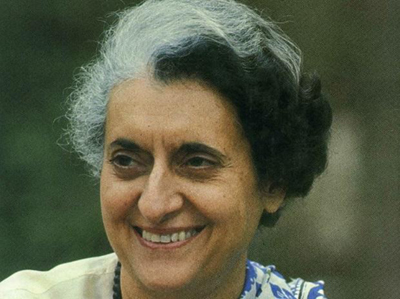
Indira Gandhi stays relevant among young women even today
Mangalore Today News Network / Yahoo
November 19, 2019: Think Indian politicians from the bygone decades and these names crop up: Lal Bahadur Shastri, Morarji Desai, Atul Bihari Vajpayee, and PV Narasimha Rao, among others. And then there is Indira Gandhi who stands out from the rest, not just for being the country’s first woman Prime Minister but one of the most controversial too.

As the first and only woman to be India’s Prime Minister, Indira Gandhi – who has often referred to as the ‘Iron Lady of India’ and even as ‘the only man in the Cabinet’ – continues to influence the generations that followed her death.
For a majority of India’s young girls today, Indira represents the very traits of a powerful, fearless woman leader – standing tall among men who often derided her and making bold decisions with a firm determination to bring about change.
“Indira Gandhi is one of the most powerful leaders India has ever seen. In fact, she is also one of the few (powerful leaders) the world has ever seen. Whenever her name comes up, it resonates power and leadership – those are the first things that come to my mind,” Himadri Bhatia, a young Bengaluru-based woman in her twenties, told MAKERS India.
Indira Gandhi’s rise to power
To be sure, Indira held the office of Prime Minister from January 1966 to March 1977 and again from January 1980 till October 1984, making her the second-longest-serving PM after her father Jawaharlal Nehru, the first PM of India.
Coming from India’s most powerful political dynasty, Indira Gandhi inarguably had a convenient connection in the political landscape of India. But her rise in politics was earned, and leadership was thrust upon her at a time when women in politics were few.
Indira’s engagement with politics began during the British Raj – long before India even gained independence. In 1930, 13-year-old Indira founded Bal Charkha Sangh, gathering children to help the Congress party during the Non-cooperation Movement. She had also worked under the guidance of Mahatma Gandhi when Delhi was torn with riots, and was imprisoned in September of 1942.
Post-Independence, Indira became the chairperson of INC’s national integration council. She became a member of Congress Working Committee in 1955 and served as the President of All India Youth Congress in 1956. Although she was underestimated as a goongi gudiya (dumb doll) when she first joined the Cabinet, her rise to power changed the story of Independent India.
From winning the Bangladesh Liberation war against Pakistan to strengthening India’s socialist and secular values, Indira Gandhi left a mark like nobody before her.
The Iron Lady of India
Yet, there is no denying the fact that one of the darkest periods in a democratic India’s history also happened to be under Indira’s rule.
The Emergency period -- from 1975 to 1977 -- saw the Indira regime’s takeover of democratic rights, curbing free press and denying citizenship rights, all of which contributed to her fall from power in 1977 election. Although the next few years saw the Janata Party gaining power, Indira was back in the PM’s seat by 1980, and continued her rule till she was assassinated in 1984.
“She was undoubtedly the Iron Lady (of India),” says Nischit Muthamma, an MBA student from Christ deemed-to-be University in Bengaluru. “I think you’ll need a lot of emotional strength to actually do what she did. That was a very difficult period for India but the decisions she took and the will she had is very empowering.”
More importantly, it highlights the growing need for more women in policymaking in India. After all, looking at politics from the point of view of people who have been systematically excluded from power is essential for democracy to thrive, especially in a country of over a billion people.
As 30-year-old Deepa Iyer aptly put it, “It’s been five decades since India first voted a woman to power. Considering how India was among the first few countries in the world to boast of a woman Prime Minister, it’s highly disappointing that we have since failed to vote any other women to power. So we really need more women in power, particularly those who enable other women around them to succeed.”